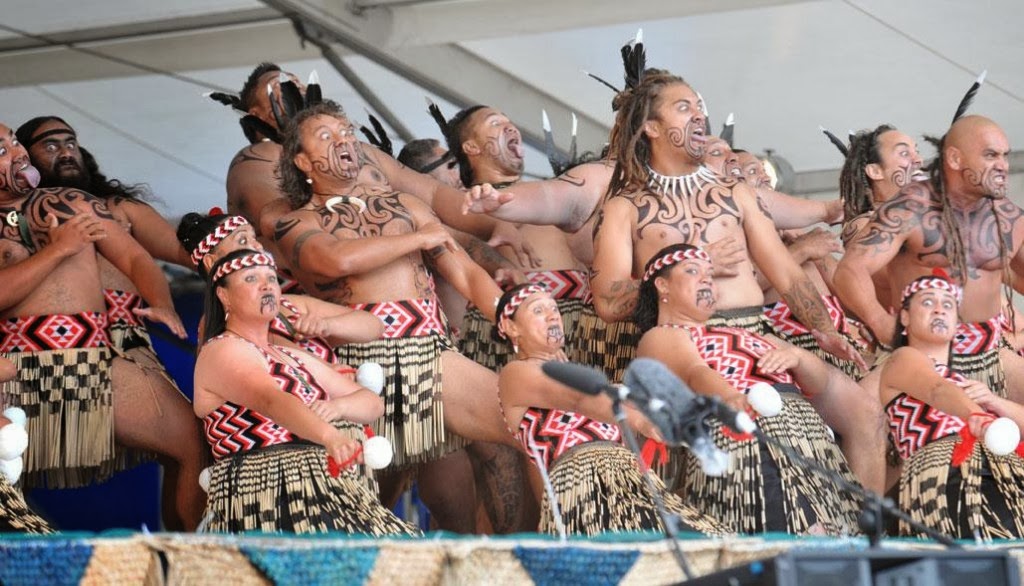Haka, ( Maori: “dance”) Maori posture dance that involves the entire body in vigorous rhythmic movements, which may include swaying, slapping of the chest and thighs, stamping, and gestures of stylized violence. It is accompanied by a chant and, in some cases, by fierce facial expressions meant to intimidate, such as bulging eyes and the sticking out of the tongue.
More than any other aspect of Maori culture, this complex dance is disciplined , yet emotional and an expression of the passion, vigour and identity of the race. It is at it's best, truly, a message of the soul expressed by words and posture.."
"Kia korero te katoa o te tinana." (The whole body should speak).
They should be shouted out in a ferocious and staccato manner, designed to instil strength and determination into the performers, such that they enact the haka with the power and force required.
It is important to realise that haka are generally not uniformly enacted, with all participants acting in time. The best haka involve a good deal of spontaneity and creativity as the performers interpret the words and feel the power of the haka take hold of them.
Haka Taparahi Hakas with out weapons as are most haka of today.Body gesture while performing the Haka
Pukana "kia pute nga karu" dilate the eyes so the whites are showing The eyes are the window to your soule and show much of what the body cannot (performed by both sexes)
Whetero Protruding of the tongue in which only the male can demonstrate his "Mana"
Wiri Shaking of the hands
Ringa pakia Slap your hands against your thighs
Pakia pakia Slap your thighs
Waewae takahia kia kino Stamp the feet as hard as you can
More than any other aspect of Maori culture, this complex dance is disciplined , yet emotional and an expression of the passion, vigour and identity of the race. It is at it's best, truly, a message of the soul expressed by words and posture.."
"Kia korero te katoa o te tinana." (The whole body should speak).
They should be shouted out in a ferocious and staccato manner, designed to instil strength and determination into the performers, such that they enact the haka with the power and force required.
It is important to realise that haka are generally not uniformly enacted, with all participants acting in time. The best haka involve a good deal of spontaneity and creativity as the performers interpret the words and feel the power of the haka take hold of them.
Haka Taparahi Hakas with out weapons as are most haka of today.Body gesture while performing the Haka
Pukana "kia pute nga karu" dilate the eyes so the whites are showing The eyes are the window to your soule and show much of what the body cannot (performed by both sexes)
Whetero Protruding of the tongue in which only the male can demonstrate his "Mana"
Wiri Shaking of the hands
Ringa pakia Slap your hands against your thighs
Pakia pakia Slap your thighs
Waewae takahia kia kino Stamp the feet as hard as you can




Maori Haka
ENJOY !
https://www.zdf.de/dokumentation/terra-x/die-odyssee-der-einsamen-woelfe-teil-eins-100.html
maybe you are interested***